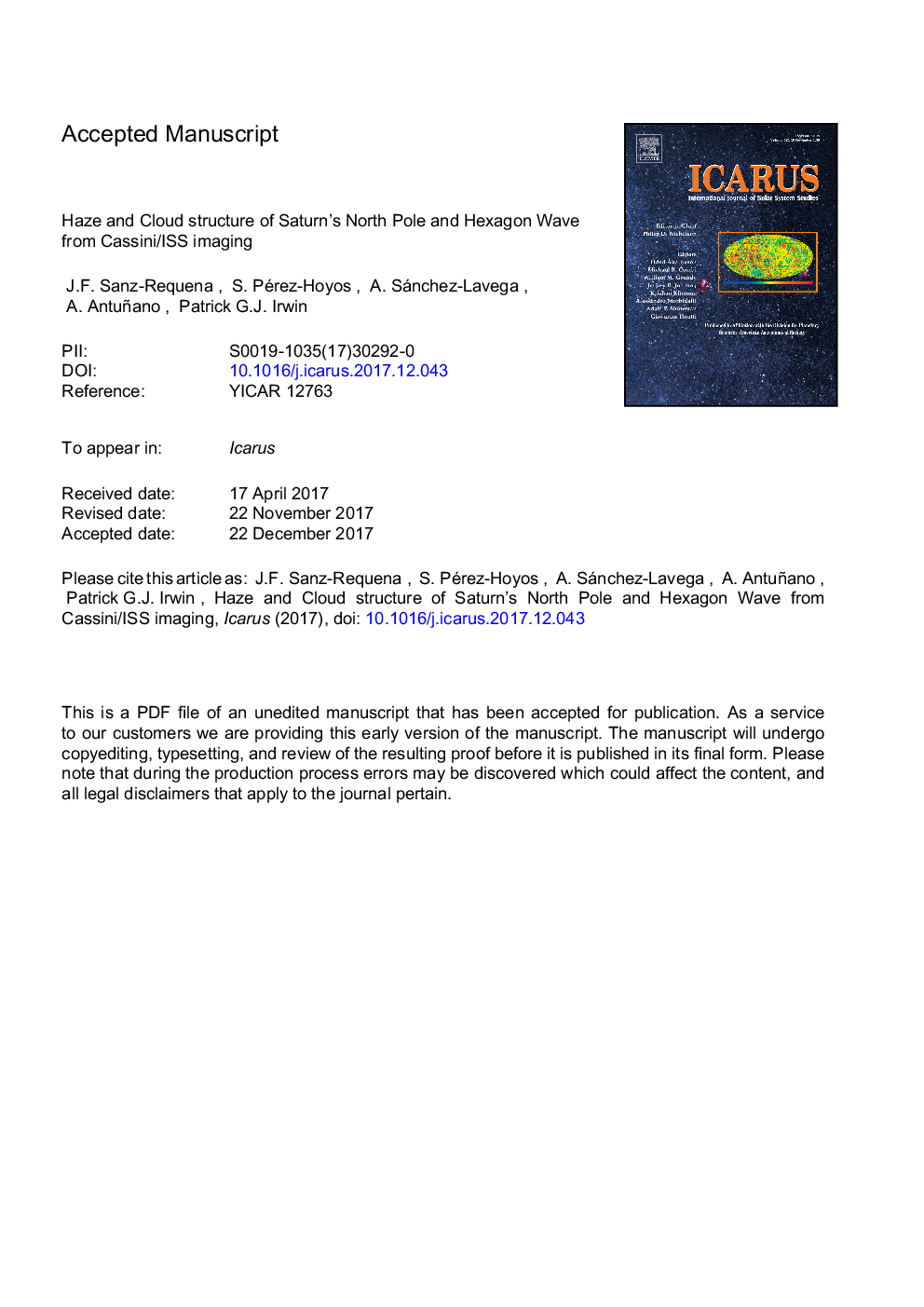| Article ID | Journal | Published Year | Pages | File Type |
|---|---|---|---|---|
| 8134353 | Icarus | 2018 | 48 Pages |
Abstract
In this paper we present a study of the vertical haze and cloud structure in the upper two bars of Saturn's Northern Polar atmosphere using the Imaging Science Subsystem (ISS) instrument onboard the Cassini spacecraft. We focus on the characterization of latitudes from 53° to 90° N. The observations were taken during June 2013 with five different filters (VIO, BL1, MT2, CB2 and MT3) covering spectral range from the 420â¯nm to 890â¯nm (in a deep methane absorption band). Absolute reflectivity measurements of seven selected regions at all wavelengths and several illumination and observation geometries are compared with the values produced by a radiative transfer model. The changes in reflectivity at these latitudes are mostly attributed to changes in the tropospheric haze. This includes the haze base height (from 600â¯Â±â¯200 mbar at the lowest latitudes to 1000â¯Â±â¯300 mbar in the pole), its particle number density (from 20â¯Â±â¯2 particles/cm3 to 2â¯Â±â¯0.5 particles/cm3 at the haze base) and its scale height (from 18â¯Â±â¯0.1â¯km to 50â¯Â±â¯0.1â¯km). We also report variability in the retrieved particle size distribution and refractive indices. We find that the Hexagonal Wave dichotomizes the studied stratospheric and tropospheric hazes between the outer, equatorward regions and the inner, Polar Regions. This suggests that the wave or the jet isolates the particle distribution at least at tropospheric levels.
Related Topics
Physical Sciences and Engineering
Earth and Planetary Sciences
Space and Planetary Science
Authors
J.F. Sanz-Requena, S. Pérez-Hoyos, A. Sánchez-Lavega, A. Antuñano, Patrick G.J. Irwin,
